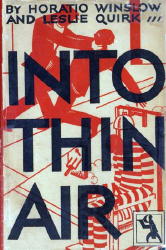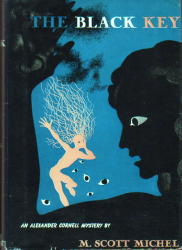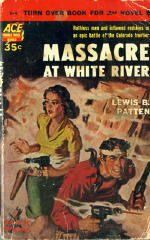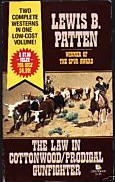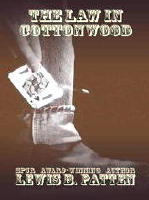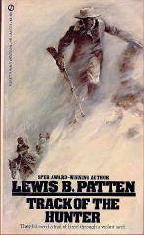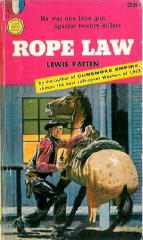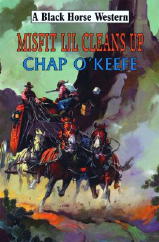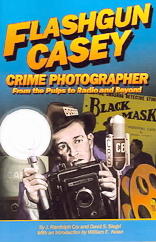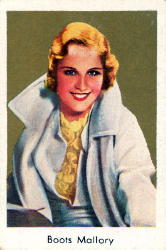Sat 27 Sep 2008
I received the following email from Mike Chomko yesterday with some startling but not surprising news. Here it is in its entirety:
Following the 2008 Pulpcon, I came home with a feeling of hope that things were finally going to change and Pulpcon would start reversing its recent losses. Now, nearly two months later, that feeling of hope is gone.
For a number of years, Jack Cullers, Barry Traylor, and I have been pushing for changes in the way that Pulpcon is run. For years, our pleas have been countered with “that’s the way we’ve always done things.” Following two lengthy committee meetings at the 2008 Pulpcon, Jack, Barry, and I seemed to get enough concessions out of the other committee members to feel that the convention was finally going to be run in new ways.
At the general business meeting held at this year’s Pulpcon, one idea that was discussed was finding a new site for the convention. Most members in attendance seemed to favor remaining in Ohio, but in a city other than Dayton.
About two weeks after returning from the convention, I took it upon myself to contact the cities of Cincinnati, Cleveland, and Columbus. All three municipalities responded, but Columbus was by and large the location that demonstrated the most interest in hosting our convention.
Needing some information for Columbus to put together a proposal for hosting Pulpcon, I contacted Bob Gorton, the chairman of the Pulpcon Committee. Bob provided the required information, but also stated he felt that it was time to renew the contract that Pulpcon had with the Dayton Convention Center.
I forwarded Bob’s email to the rest of the Pulpcon Committee-Richard Clear, Jack Cullers, Don Ramlow, Mary Ramlow, and Barry Traylor. The result of my email was a vote to renew the contract with Dayton (with Jack, Barry, and myself dissenting) and a reprimand from Bob Gorton. He told me that he was unaware that I had made a motion to call for a vote whether or not to stay with the Dayton Convention Center. I was simply trying to get things done quickly and responsibly.
At this summer’s committee meetings, Bob Gorton told us he is “not very good with email.” He said that he “largely ignored most email.” However, he agreed to “meet” via email at least once a month. The committee decided to hold a meeting via email on the first weekend of every month. We could contact each other via email at other times, but the monthly meetings would be required.
Our first email meeting was held over Labor Day weekend. To start our discussion, I combed through the Pulpcon business meeting minutes and the minutes from our two committee meetings, and wrote what I thought should be done concerning a wide array of items. I asked the use of volunteers, venues in which to advertise, conventions where we should have flyers, links to other websites, an explanation addressed to the general pulp community explaining why Pulpcon was returning to Dayton, changing the types of material that can be sold at Pulpcon, showing movies at the convention, obtaining mailing lists, newsletter revisions, a survey of Pulpcon attendees, and other things. I also suggested that with all the work to be done, we should be communicating more than once a month.
The responses to my queries and ideas were practically nil from Gorton, Don Ramlow, and Richard Clear (who was new to the Pulpcon Committee).
Since that first email meeting, Bob has been silent, not communicating with Jack, Barry, or me. I do not know if he is communicating with anyone else. Don has emailed a few suggestions, as well as Mary. Richard Clear has likewise made a few comments. But for the most part — except for fairly constant communications between Jack Cullers, Barry Traylor, and myself — the Pulpcon Committee has largely been silent.
In fact, in a recent email to the entire committee, Don Ramlow wrote: “I know everyone has their own responsibilities. However, my schedule is the busiest in the fall. I’m setting up 12 radio productions for my theatre group All Ears theatre, teaching five colleges classes (one which is on-line requiring a lot of email contact), working with other people on other conventions, trying to find time to practice with my rock band “Chaos Theory” and finally finish up my 200,000 word reference book on OTR so I can submit it to the publisher yet this year. That, in addition to finding time to spend with Mary and our children and grandchildren. I realize that my schedule is not of concern to others and that you all have your own commitments. However, for me it means trying to budget time for all of them and the only way I can do that is to schedule accordingly.”
When asked this week about preparing advertising flyers for Gary Lovisi’s book show, Bouchercon, and Rich Harvey’s Pulp Adventurecon, Gorton and Don Ramlow did not respond.
Given Bob Gorton’s silence and Don Ramlow’s suggested lack of time to commit to the work required to turn Pulpcon around, I asked them to resign from the committee. Both Jack Cullers and Barry Traylor seconded my motion. Unfortunately, both Gorton and Ramlow have ignored my request.
Jack Cullers, Barry Traylor, and I have decided that if we want to move the convention forward, it is impossible to continue to work with Bob Gorton and Don Ramlow. They seem to feel that shortening the convention to three days will be enough to turn things around. They seem to think that by creating a few generic flyers that seem to be addressed to people who already know about Pulpcon, the convention’s troubles will be over. They seem to think that they need to devote very little time and energy to turn Pulpcon around. They seem to think that communication is unnecessary.
Although it’s time for Gorton and Ramlow to step aside so progress can be made, they do not appear to be willing to do so. Jack Cullers, Barry Traylor, and I are willing to devote the time and energy needed to get Pulpcon moving forward. However, we cannot do so with the obstructions set up by Gorton’s inability to communicate and Ramlow’s lack of time and cooperation. We have therefore decided to break away from the Gorton/Ramlow convention and organize our own Pulpcon.
This past June, Jack Cullers learned that the Pulpcon service mark, originally registered to Rusty Hevelin, had lapsed in 1989. So Jack applied to register the service mark in his own name. The United States Patent and Trademark Office is currently investigating Jack’s claim to the service mark. Jack, who has been a member of the Pulpcon Committee for many years, believes there should be no difficulty in registering the service mark in his own name.
Jack, Barry, and I are currently investigating sites in Columbus, Ohio for a planned Pulpcon to be held in late July or early August, without the obstructionists Gorton and Ramlow. We are also in discussions with interested parties who are considering holding an East Coast pulp and paper convention, most likely in November 2009.
Whenever we hold the convention, we plan to publicize it and open it up to a wider array of material than has traditionally been allowed at Pulpcon. However, if we are to organize a successful convention, we will need your help. Please plan to support our convention in whatever month it is held.
If you are a dealer and would be interested in selling at our show, please let us know as soon as possible. If you are interested in lending a hand, please drop us a line. More particulars will follow as our plans become better defined.
If you’d like to be added to the new Pulpcon mailing list, please send your name and address to Mike Chomko at michaelchomko@rcn.com or 2217 W. Fairview Street, Allentown, PA 18104-6542 or Jack Cullers at jassways@woh.rr.com or 1272 Cheatham Way, Bellbrook, OH 45305. Please be sure to include your email address if you have one. Thanks.

